Neck pain stretches
What is neck pain and how stretching is useful in neck pain?
Neck pain is a very common complaint by people nowadays. Through exercises and stretches, you can get stronger muscles in the neck and gain flexibility. It is good to minimize painful motions and give a stiff neck some rest, but it is also important to keep your neck moving to avoid further stiffening of muscle de-conditioning. A flexible neck can help prevent injury to your shoulders, upper back, and arms, too.
If your neck is stiff cause of countless hours in front of a computer screen or a forward bending activity like gardening or cleaning, you are probably looking for some way to get rid of it.
Fortunately, there have lots of ways you can stretch your neck to decrease pain and stiffness, which may be accompanied by muscle spasms, limited flexibility, and headache. Doing neck stretches can help you to get your mobility and the full range of movement. This allows you to go about your daily activities with easiness, plus you will be more comfortable when you sit or stand for prolonged periods.
What is neck pain?
Neck pain is a pain in or around the spine under your head, called the cervical spine. Neck pain is a common symptom of different types of injuries and medical conditions. You may have axial neck pain located mostly in the neck or radicular neck pain (pain shoots into other areas such as the shoulders or arms). It can be acute (lasting from days to up to six weeks) or chronic (lasting longer than three months to years). Neck pain can affect our activities of daily living and decrease our quality of life if it is not treated properly.
What does neck pain feel like?
Persistent pain or a stabbing or burning pain. Increased sensitivity to mild pressure applied to the neck. Neck pain plus headache and numbness or tingling in single or both hands. Increased tension/tightening in the muscles in the neck. A stiff neck is not usually a sign of something serious, but that does not mean it is something you need to live with.
Neck stretches
Flexibility and stretching exercises can help to expand or preserve the range of movement and elasticity in affected cervical (neck) joints, and thus relieve the stiffness that accompanies pain. As a general rule, neck stretching is best to do every day, and some stretches can be done maximum times a day.
Different types of neck stretch to relieve neck pain.
Forward and Backward Tilt
How to do it?

This can be done while you are seated or on your feet. Keep your movements smooth and slow.
- To Start this exercise your head should be squarely over your shoulders and your back should be straight.
- Lower your chin toward your chest and hold for 20-30 seconds. Go to the initial position, and slowly elevate your head back up.
- move your chin up toward the sky and bring the base of your skull toward your back. Hold for ten seconds, then return to the initial position.
- Repeat this maximum times. Do it in your daily activities.
Side Tilt
How to do it?
- This exercise can be performed in a standing position, with your hip-foot width apart and arms down by your sides.
- Smoothly tilt your head toward your left shoulder and try to touch it with your ear.
- Stop when you feel the stretch.
- Do not elevate your shoulder.
- Hold the stretch for five-ten seconds, then return to the initial position.
- Repeat on your right side. You can do several sets and work your way up to ten repetitions.
- To feel more stretch, put the hand on the same side of your tilted head on top of your head, and press lightly with your fingertips.
Side Rotation
How to do it?
- You can perform this in a sitting or standing position.
- Your head should be squarely over your shoulders and your back should be straight.
- Slowly turn your head to the left until you feel a stretch in the side of your shoulder and neck.
- Hold this stretch for thirty seconds, and then slowly move your head forward again.
- Repeat on your right side.
- Do up to ten sets.
Shoulder Roll
How to do it?
- You can perform this in a sitting or standing position. move your shoulders straight up and move them in a circle going forward.
- Do it six times. Return to the initial position, and make another six circles, this time you have to go backward.
Neck Flexion (Forward Bending)
How to do it?
- To perform this exercise you have to move your neck slowly toward the chest and look downward while only moving the head.
- Once the head has been flexed forward as much as it can comfortably go, hold this stretch for five seconds before returning to the initial position.
- The neck flexion stretch is felt throughout the posterior part of the neck.
Lateral Neck Flexion (Bending Side to Side)
How to do it?
- You can perform this in a sitting or standing position. Slowly flex the head to any one side, such as by bringing the right ear toward the right shoulder.
- While this stretch, the shoulders, and back remain steady while the neck bends laterally to the side.
- Once the head has flexed as much as it can comfortably go to the side, try to hold this stretch for five seconds before returning the head to the initial position. This same stretching is repeated on the left side.
- When the lateral neck flexion is performed with the head bending toward the right shoulder, the stretch is felt along the right side of the neck.
Neck Rotation (Turning Side to Side)
How to do it?
- To perform this exercise your back should be straight and shoulders steady, slowly turn the head to the right as much as it can naturally go without increasing pain.
- Once the head has reached its rotation limit, hold the stretch for five seconds before bringing it back to the neutral position.
- This same stretching is repeated on the left side.
These all stretches noted for a stiff neck, rotation is often the most challenging, especially on one side or the other.it is only done with no pain, you have to rotate your neck in a comfortable position.
Neck Retraction
How to do it?
- Neck retraction can be performed in a sitting or standing position. Initiate this exercise by looking straight ahead and allowing yourself to relax.
- Your chin should be tucked down slightly and move your head smoothly backward until it is pulled back as much as you can without straining or feeling any pain.
- Continue looking straight ahead, being careful not to tilt the head forward or backward while doing this stretch.
- Maintain this position for three to five seconds and then return to the starting position.
- Repeat this stretch ten to fifteen times.
Seated Clasped Neck Stretch
How to do it?
- To perform this exercise you have to Sit comfortably on the ground or in a chair, making sure your body is in proper alignment your head should be stacked above your ribs and your pelvis. hold your hands and bring both palms to the back of your head.
- Gently press your hands down toward the floor, tucking your chin into your chest.
- Hold for at least thirty to forty seconds, or 7-8 deep, diaphragmatic breaths in and out.
- Seated clasped neck stretch targets your upper back and trapezius muscles. If you feel more stretch then pull with only a single hand in the middle of your head instead of both hands.
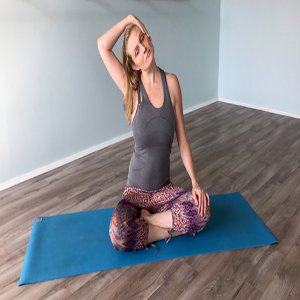
Upper Trapezius Stretch
How to do it?
- To perform this exercise you have to Stand stand or sit tall, and place your right hand on your lower back, and the left hand on the opposite side of your head.
- Move your head toward your shoulder, looking straight ahead, until you feel a stretch in one side of the neck.
- Hold for at least 30 seconds (or 5-8 deep, diaphragmatic breaths) repeat this on both sides.
Bridge
How to do it?

- To perform this exercise you have to be on the floor, your knees should be flexed, and your feet hip-width apart.
- With your palms and feet pressing firmly into the floor, raise your hips off the ground.
- Hold your hands together below your pelvis, extending through your arms, and contract your core so your lower back is pressed against the floor. Hold for two full diaphragmatic breath cycles (deep breath in, deep breath out).
- This stretch helps improve the flexibility of your paraspinal muscles or your middle back muscles.
Thread the needle
How to do it?
- To do this exercise begin with a quadruped position, all four limbs with your hands under your shoulders and hips over your knees.
- Reach your left arm underneath and across your body with your palm facing up. flexed your right elbow as you gently lean into your left side; you should feel a stretch in the back of your left shoulder.
- Hold for one full diaphragmatic breath cycle (deep inhale in, deep exhale out) in that bottom position, then return to the initial position and repeat. Continue for at least thirty seconds. Then switch sides.
- This stretch helps to improve the mobility of your thoracic spine.
Banded Pull-Aparts
How to do it?
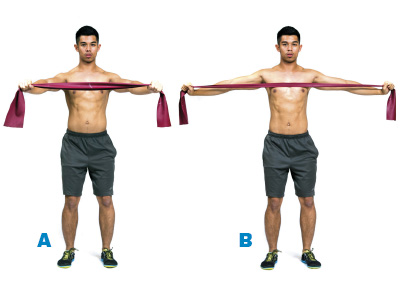
- To perform banded pull apart you have to Stand with your feet hip-width apart. Hold one end of a resistance band in both hands.
- elevate your extended arms to shoulder height, palms down, with your hands about 6 inches apart. The band should have a small amount of tension, but not be taut.
- Now pull the band apart, extending your arms wide to each side until your upper body is in a T position, your hand should be at the same height. Pause for 2 to 3 seconds when the band is fully extended. Return your arms to the center.
- Continue for at least 30 seconds. This stretch works the muscles in the middle of your back and your posterior deltoids.
Cat-Cow Pose
How to do it?
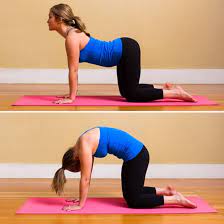
This exercise allows two movements of the neck that is neck flexion and extension, which helps to decrease tension in your head, neck, and back. It also helps to improve body awareness and good posture.
- start this with all four limbs in a tabletop position.
- breath in to expand your stomach as it lowers toward the ground.
- look upward, lift your chin, and allow your head to tilt posterior slightly.
- breath out, tuck your chin towards your chest, and round your trunk toward the sky.
- hold for a second here, then allow your head to hang down.
- Move your head in any comfortable position to decrease tension.
- From here, move between the lower and upper positions in your chosen space.
- Allow your breath to guide the movement.
- Do this for at least one minute.
Sphinx Pose
How to do it?
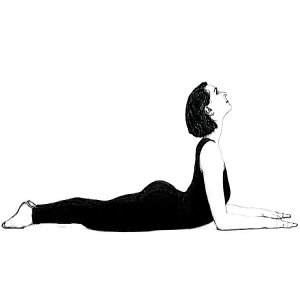
- Sphinx pose strengthens and stretches your spine, which helps to promote good posture.
- It also helps to correct symptoms of computer or text neck. To perform this stretch you have to Lie on your tummy with your elbows directly put under your shoulders.
- Straighten your forearms in front with your palms facing down.
- Contract your lower back muscles, glutes, and thighs to raise your chest and head.
- Look straight ahead or slightly up toward the sky. Hold this position for up to 50 to 60 seconds.
- Repeat this one to three times.
Bed hangs
How to do it?
- Bed hangs help to improve circulation, alleviate tension, and correct imbalances from repeatedly looking or bending forward.
- To perform this exercise you have to Lie on a mat with your shoulders near the edge.
- Gently hang your head back over the edge of the bed.
- Put your hands overhead or alongside your body.
- Hold this position for up to sixty seconds.
- Gently turn your head back onto the bed and relax in this position.
- Repeat 1 to 2 times.
Standing forward bend
How to do it?
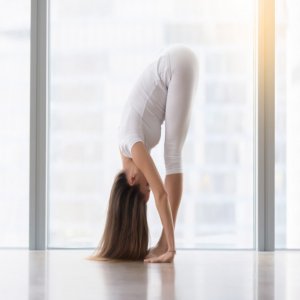
This pose allows you to release tension in your head, neck, and back. You will also loosen up your spine and legs. To deepen this stretch, flexed your knees and put your palms facing the ceilings underneath your feet.
- To perform this stretch you have to Stand with your feet hip-distance apart or slightly more.
- Hinge from your hips to lower your trunk toward your legs.
- Flexed your knees to a comfortable degree.
- Put your hands on your legs or on the ground.
- Move your chin toward your chest and let your head hang heavy.
- Move your head in any comfortable direction.
- Hold this stretch for fifty seconds.
- Put your hands on your thighs to press yourself up into the initial position.
Preventive measures
There have different strategies you can use to prevent neck pain.
- Arrange your workplace so that your computer, keyboard, and tools are positioned correctly.
- You can use a standing desk or a variety of workstation positions, if possible.
- Choose a table that supports the natural curvature of your spine.
- For every hour of seated work, get up to walk around the corridor or perform light exercises for at least five minutes.
- Use a pillow that is designed to prevent and reduce neck pain.
- Be aware of your body position in all alignment as you move through your day.
- You can also use a backpack or wheeled bag instead of carrying loaded bags on your shoulder.
- Apply an ice pack or heat to the affected area for fifteen minutes at a time.
- If you are a smoker, make a plan to stop or cut back.

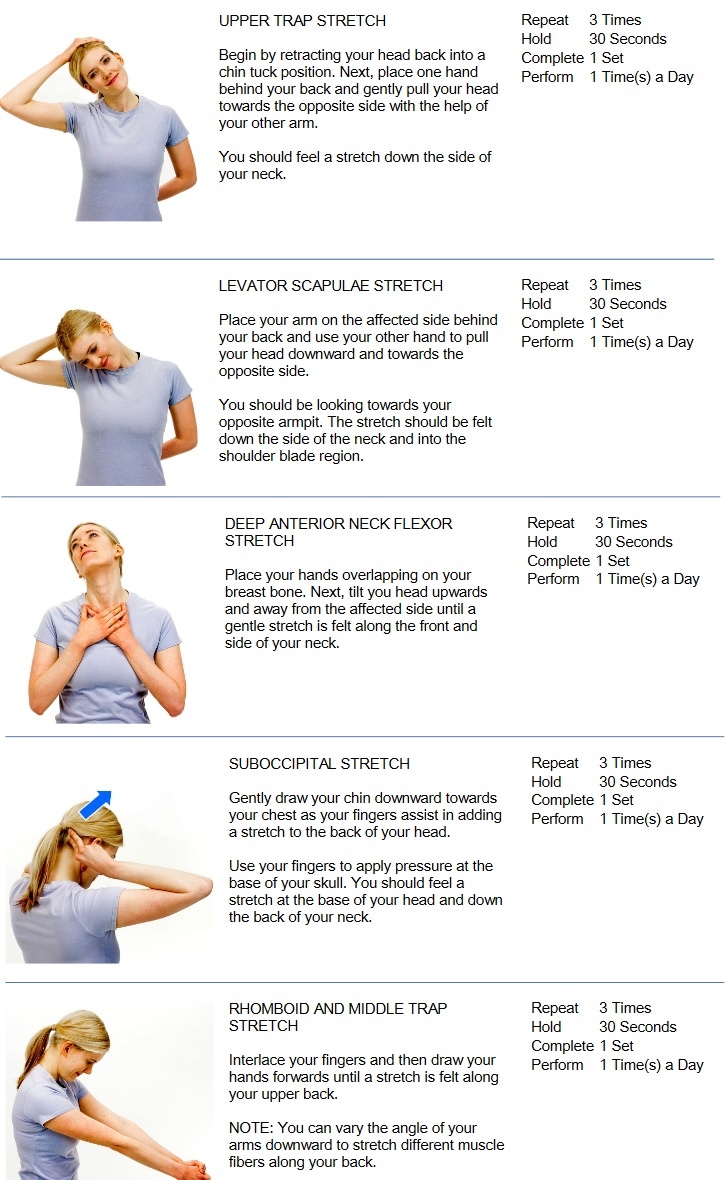


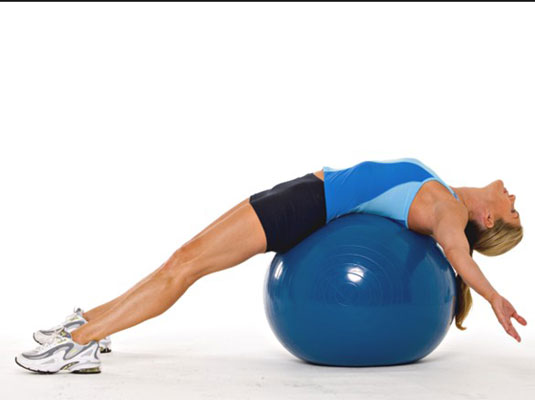

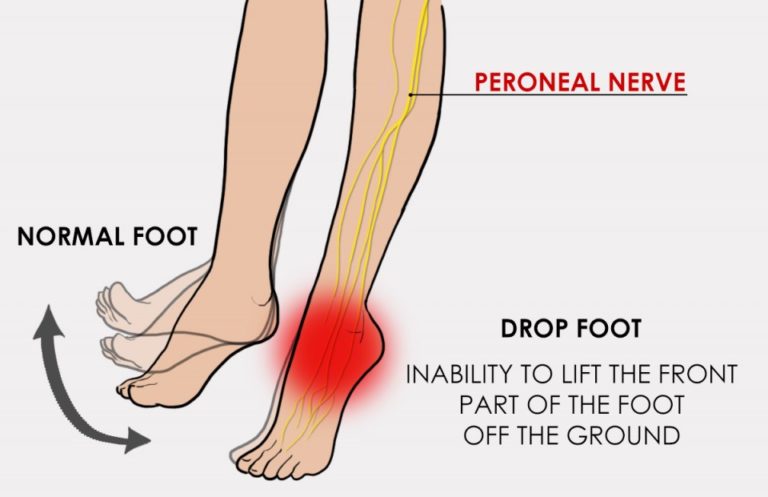
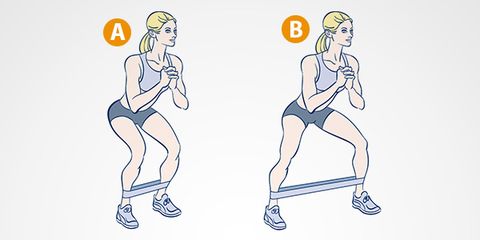
One Comment